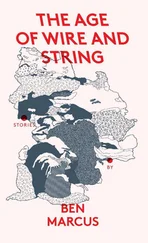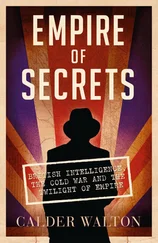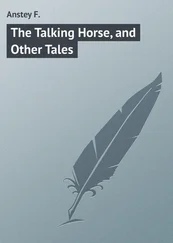His name is Ezekiel Hobden, Hobden to officers, NCOs and most private soldiers but Zeke to a favoured few. On his attestation form he signified his intention ‘to serve His Majesty until I be legally discharged’ with a bold cross, alongside which a Justice of the Peace and another witness (who has helpfully included Esquire as part of his signature to make the point) have appended their names. He used to be a plough-boy from the gentle downlands above Alresford in Hampshire, but a row with his master and an evening’s drinking saw him take the King’s shilling in Winchester. Now his old calling is like some half-remembered dream, although when he sees Portuguese peasants ploughing their red soil he still recalls the plodding team in front and the rich dark earth rolling from the coulter behind. Had he ever heard of Shakespeare he would agree that ‘things without remedy should be without regard’, but today it will be enough for him to be alive come sunset.
He stands 5ft 6ins tall – taller than many of his comrades – and now he himself is a beast of burden. Broad buff-leather cross belts meet on his chest, with an oval plate at their intersection; thinner buff straps run down from his shoulders and across his chest, and a brown leather strap lies across his right shoulder with the thick canvas belt of a haversack alongside it. We can see, even from the front, the edges of his black canvas pack, and the grey greatcoat strapped on top of it stands well above his shoulders. A black cartridge box hangs at his right hip, and bayonet-scabbard and round wooden water bottle at his left.
His hands have the same worn-leather hue and texture as his face, and their short finger-nails are black-edged. They bear a dozen new cuts and old scars, and his right thumb is thickened with a mighty callous. His left hand hangs loosely by his side, while his right – thumb and forefinger apart – rests lightly on the bright steel barrel of his upright musket. Its 39-inch barrel is tipped with a bayonet, sixteen inches of triangular steel, its point level with his shako-plate.
There is an animal tang about him which even that fine natural deodorant, the pervasive wood-smoke, cannot conceal. In part, it stems from the fact that he has worn the same jacket for six months and it smells powerfully of old sweat laced with the bad-egg stink of black powder, the muddy odour of the pipe-clay which whitens his belts, and the sharper nip of the brick-dust which, dampened by water, brings the metalwork of his musket and the brass of his accoutrements to a shine. It must be said, though, that not much polishing has gone on of late. He has only worn his heavy linen shirt for a week, and so may hope to get another week or more from it yet, but our nose tells us that it is already past its best, and is not much helped by the fact that, long tails tucked in between his legs, it doubles as underwear. Even when clean it was not entirely sweet: the soap used to wash it was made from mutton-fat, and the gentlest scent of roast lamb mingles with the other smells. He cleaned his teeth this morning, using the well-chewed end of a green twig as a brush, but these efforts cannot conceal the facts that there were onions in his supper and rum after it.
To left and right, in a line 250 yards long, stand similar figures. And similar is the word, for they are by no means uniform: there is infinite variety in the injury sustained by shakos and the nature and quality of the patches on clothes. One man has lost his shako altogether, and wears an incongruous round black hat. He does not look his best, and not simply because of this sartorial defect: we may confidently assume that the missing item will not redound to his advantage. The men stand shoulder to shoulder, elbows touching, in two ranks a pace apart, in ten distinct company groups. Each company has about fifty private soldiers and corporals, with three officers, two sergeants and a drummer or two. Some of these worthies stand alongside their companies, while others, the file-closers, lurk behind the second rank. There is some movement amongst the captains, who command the companies: three of them have left their stations on their companies’ right and are pacing about in front. One has had a word with the soldier in the round hat, and is stalking down the ranks intent on further mischief.
The officers carry slim, straight gilt-hilted swords and show their status by crimson silk sashes, knotted over their left hips, and their rank by fringed epaulettes. Some have pistols tucked into their sashes or slung in open-topped leather holsters. The sergeants have simpler swords and also wear sashes, but theirs bear a broad central stripe of the same hue as collar and cuffs. They carry half-pikes, whose broad blades tip nine-foot ash hafts.
There is clearly something different about the two companies on each flank. In both cases their sergeants carry muskets and their officers curved sabres. The soldiers wear lace-embellished wings on their shoulders and the officers a more elaborate version in gold braid. The right flank company sports white shako pom-poms, for these are the battalion’s grenadiers, and the white commemorates the smoke of the grenades their forefathers threw. They are noticeably bigger men than their comrades in the other companies, and have an unmistakable air to them. At the other end of the line the pom-poms are green: this is the light company, containing the battalion’s best shots. Although its soldiers may lack the swagger of the grenadiers, there are several keen-eyed countrymen amongst them, and we may just see – as, indeed, one of the file-closing sergeants already has – that a hare’s paw is protruding from one man’s haversack. There has already been murder this morning, and there will be more before nightfall.
Behind the file-closers stand the drummers, grouped behind their companies, yellow tunics faced with red and laced with much white worsted. In the centre rear are two mounted officers, a major, the battalion’s second-in command, on the right and the adjutant, the commander’s personal staff officer, on the left. Further back stand a dozen pioneers, equipped with shovel and axe. The ‘band of music’ stands to the rear, but today the musicians have laid aside their instruments and are ready to act as stretcher-bearers, although their stretchers are simply sewn blankets looped between two stout poles. The battalion’s surgeon and his assistant, in dour anticipation of business to come, have unpacked their instruments from their mule and have blankets and water to hand.
In the centre the battalion’s colours jut sharply above the line. Both are of embroidered silk. One, the king’s colour, is the Union flag, and the other, the regimental colour, is the now-familiar yellow with the national flag in the upper corner where it joins the staff. The regiment’s number, wreathed in laurel, is in the colour’s centre. The pike is tipped by a spear point, now ornamental, from which hangs a long double tassel. Although at present the colours rest with their butts on the ground, the two young officers who bear them have broad shoulder-belts, with a strategically situated metal-lined pouch to support them when they are carried.
And young is indeed the word. The ensign bearing the Regimental colour cannot be more than sixteen, and seems in the grip of some powerful emotion. He is as white as a sheet, and though he is standing stiff and straight he is swallowing more than a boy ought. His comrade with the king’s colour is altogether more cheery. He is a big lad, and has already outgrown his tunic: lanky wrists and grubby shirt-cuffs protrude from its sleeves, and it is tight across his chest. His beefy face wears an unconcerned grin, and he seems to have enjoyed a whispered joke with the non-commissioned officer to his rear. Behind each officer stands a pike-armed sergeant: the one behind the regimental colour has inched forward till he is nearly touching its ensign, and is whispering, between clenched teeth: ‘Steady sir, steady: waiting is the hardest part, and ‘twill all be well when the ball opens.’
Читать дальше












